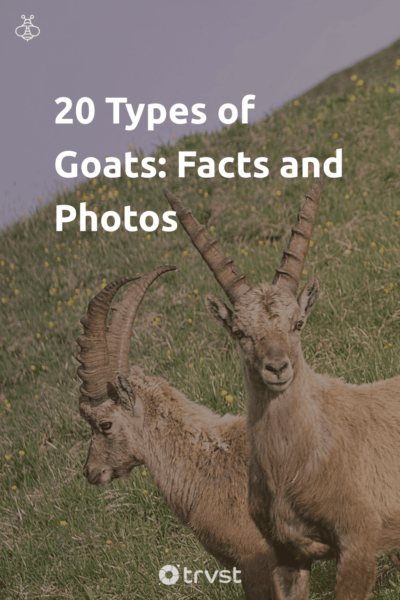20 Types of Goats: Facts and Photos
Domesticated around 11,000 years ago, over 300 types of goats are now grazing everywhere except Antarctica. Upon closer examination, there are other goat species with distinct characteristics, interesting behaviors, and adaptable natures.
This article delves into the many types of goats, from the unique-looking wild goats to the widespread domesticated breeds. We also answered why mountain goats are not goats. Read on to learn more, or check out all the goat facts you did not know.
Goat Classification
The Genus Capra is a complex taxonomy in the animal kingdom, encompassing a total of nine different species, all belonging to the goat family. These species include wild goats, Ibexes, Turs, Markhors, and domesticated breeds.
Despite residing under the same genus, these nine species of Capra have contrasting physical attributes, habitats, and behaviors. The first eight species talk about the non-domesticated species, while the rest are some of the famous goat breeds.
20 Types of Goat Species And Breeds
Quick links to the different types of goats:
1. Alpine Ibex (Capra ibex)
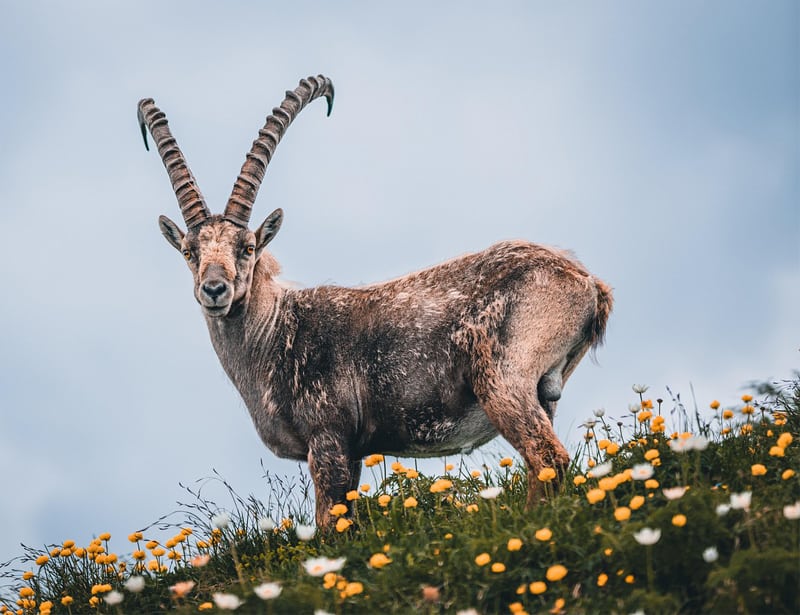
The Alpine Ibex inhabits the rugged terrains of the European Alps, particularly amidst rocky regions above the snow line. This robust animal, striking in appearance, stands about 3.5 feet tall at the shoulder and weighs up to 150 lbs, males being generally larger than females.
Interestingly, Alpine Ibex showcases exceptional climbing skills, often scaling nearly vertical rocky cliff sides. This incredible ability allows them to access fresh plants in seemingly unreachable places and provides an effective escape route from predators.
2. Nubian Ibex (Capra nubiana)
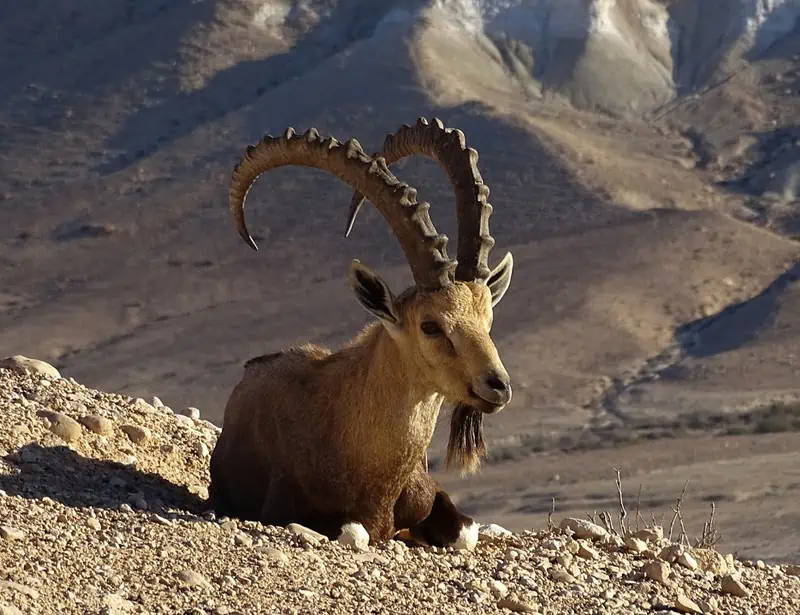
The Nubian Ibex establishes its habitat in the craggy terrains of North Africa and the Arabian Peninsula, preferring steep landscapes up to 9,800 feet. Easily recognizable, it sports a light sandy-brown coat, with durable and muscular bodies that can and curved horns extending up to 39 inches in length.
Despite its survival skills, the IUCN has listed the Nubian Ibex as vulnerable due to significant population declines driven by hunting and habitat loss.
3. Spanish Ibex (Capra pyrenaica)
The Spanish Ibex lives in the rugged mountainous regions of Spain and Portugal. Their habitats range from lowland forests to high-altitude rocky cliffs reaching up to 8,200 feet above sea level. They can be up to 5.6 feet long and weigh between 100 to 220 pounds, with backward curving horns.
4. Siberian Ibex (Capra sibirica)
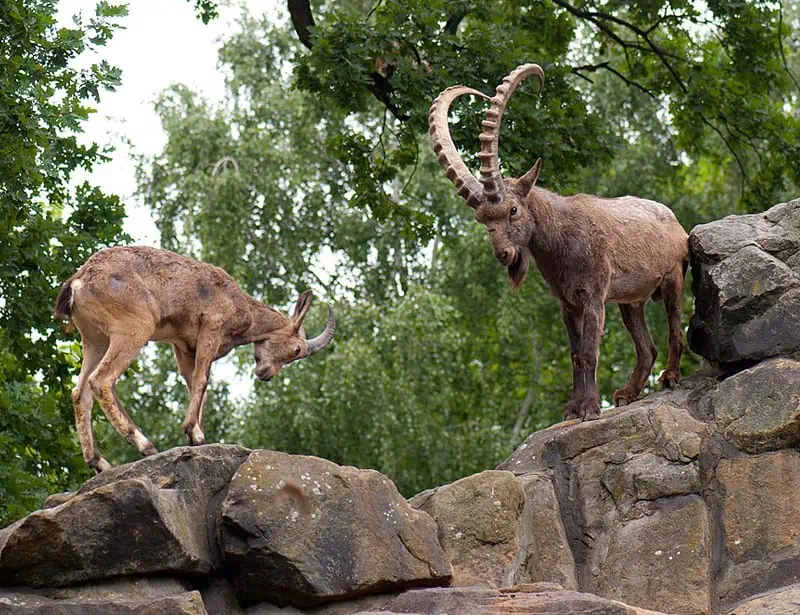
The Siberian Ibex dwells at elevated altitudes, mostly above 9,800 feet in rugged, rocky terrains. These mountainous habitats extend across Central Asia, particularly in Mongolia, China, Kazakhstan, and Tajikistan.
They have a noticeable sturdy body, weighing between 150 and 330 pounds, with a grey-tan fur coat and males bearing impressive curved horns that can reach up to 5 feet long.
5. Markhor (Capra falconeri)
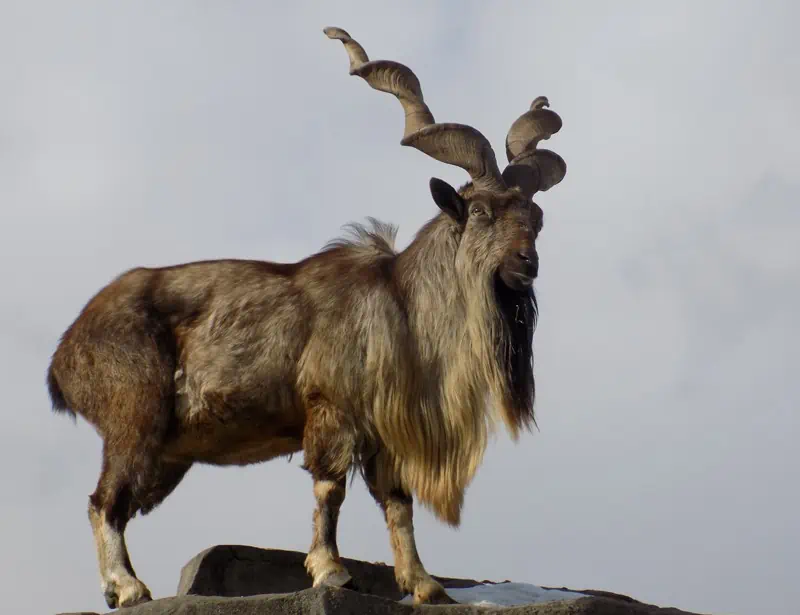
The Markhor inhabits the rugged mountainous regions of central and western Asia, specifically Afghanistan, Tajikistan, Uzbekistan, and Northern Pakistan. Its preferred habitat is nearly 13,000 feet in steep terrain, wooded hillsides, and rocky outcrops.
A mature Markhor stands about 3.5 feet at the shoulder and can weigh as much as 240 pounds. Notably, it has distinctive long and twisted horns reaching up to 5 feet in males.
6. West Caucasian Tur (Capra caucasica)
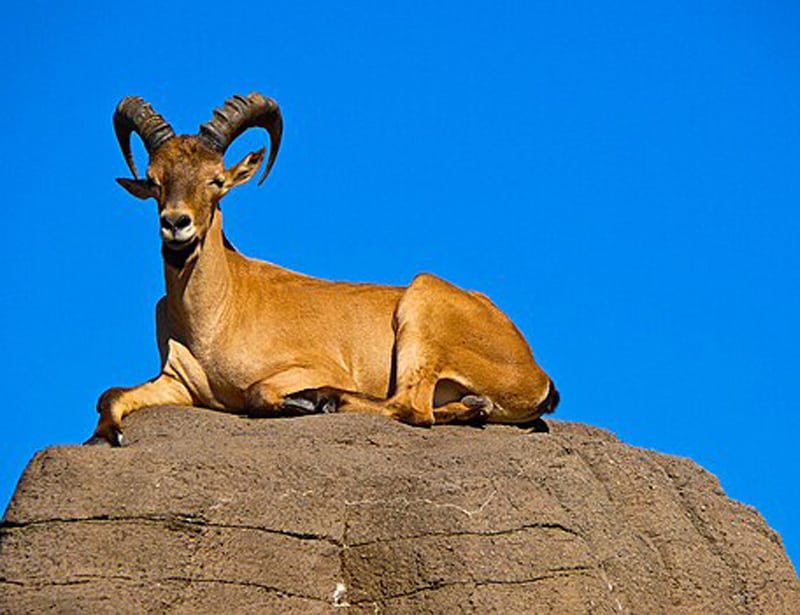
The West Caucasian Tur prefers 2,600 to 13,000 feet above sea level elevations, usually frequenting areas with steep slopes and rocky terrains.
A male West Caucasian Tur stands about 40 inches at the shoulder with a robust build and a coat of long, coarse hair that’s usually sandy-brown. The males exhibit one distinctive behavior: they hammer their horns together in battles that echo across the valleys.
Regretfully, due to intense hunting and habitat loss, this unique mammal is now classified as Endangered by the IUCN.
7. East Caucasian Tur (Capra cylindricornis)
The East Caucasian Tur thrives in the steep, rugged terrains of the Eastern Caucasus Mountains. These habitats can range in elevation from about 800 to 4,000 feet, with ample vegetation for their herbivorous diet.
Physically, both sexes sport a light chestnut color during summer that turns gray in winter, with males distinguishable through their larger size and long, scimitar-shaped horns, which can reach up to 5 feet in length.
8. Wild Goat (Capra aegagrus)
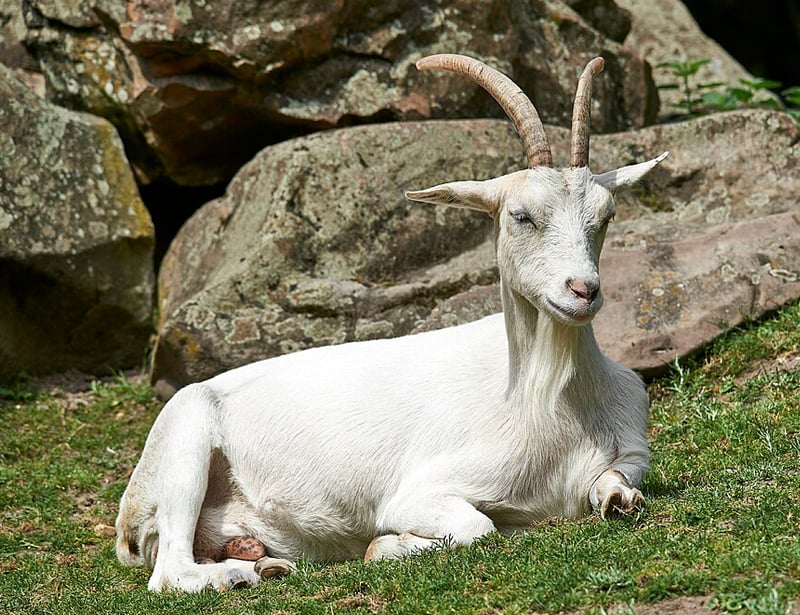
Wild Goats primarily inhabit steep hillsides and mountain ranges across the globe, from Eastern Europe and the Middle East to Central Asia, thriving in elevations around 16,500 feet.
Their average weight ranges from 130 to 300 lbs and a height of approximately 2.5 to 3.5 feet. Their distinctive horn curvature marks them out, spanning a distance of nearly 4.5 feet in mature males.
An intriguing behavior in Wild Goats involves seasonal movement; they descend to low altitudes during winter and ascend to higher grounds to escape the heat in summer.
Notably, studies believed goat domestication3 started 11,000 years ago, mostly from Wild Goat populations.
9. Alpine Goat (Capra hircus)
The Alpine Goat, originating from the French Alps, is a medium to large-sized breed, highly resilient and adaptable to various climates and terrains. They have erect ears and coats in shades from white and gray to brown and black.
Moreover, farms worldwide highly value these goats' impressive milk-producing abilities. Their delicious milk is low-fat and high in protein.
Besides their productivity, Alpine Goats are gentle and friendly. They make excellent domestic goats for farmers because of their unique vocalizations and social dynamics.
10. Boer Goat (Capra hircus)
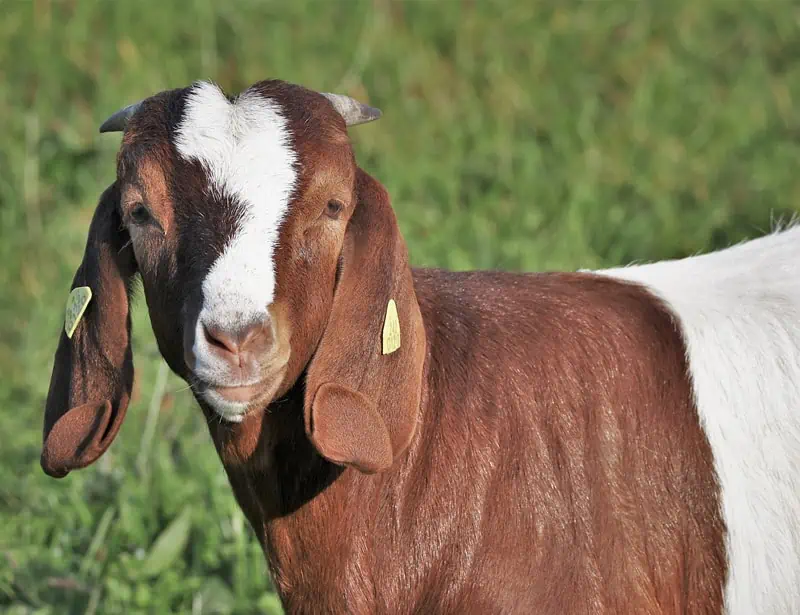
The Boer Goat originated from South Africa's arid expanses. They have striking white bodies, brown heads, long drooping ears, and sturdy frames.
Thanks to their impressive growth rate, people breed Boer Goats mainly for meat. Furthermore, these meat goats are adaptable and can live in the dry heat of semi-deserts or the biting cold of chillier regions.
This domestic goat is gentle and manageable, a hit both on the farm and in the classroom. That is why they are popular in children's 4-H projects, which are hands-on educational programs about agriculture and livestock.
11. LaMancha Goat (Capra hircus)
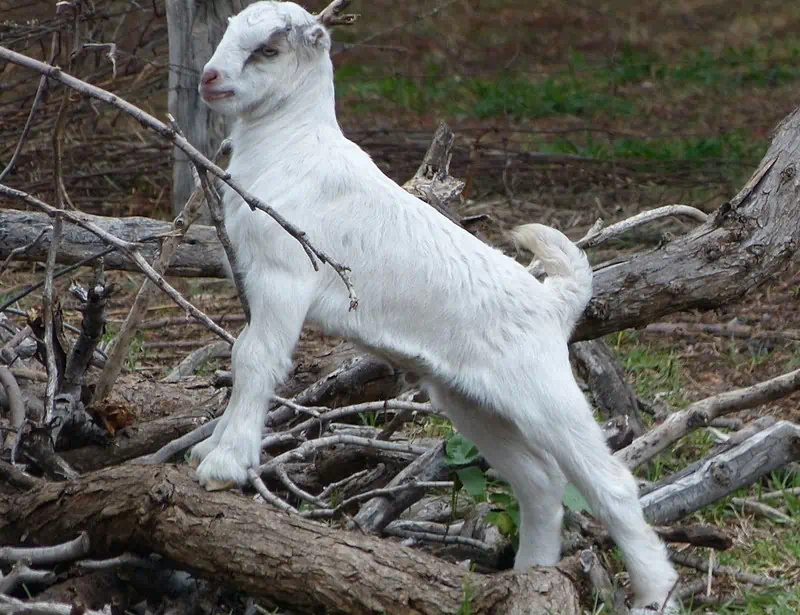
LaMancha Goats originated in California. They have tiny ears, which come in two types: gopher ears measuring barely an inch long and slightly longer elf ears that don’t exceed two inches.
Farmers and homesteaders prefer LaMancha Goats due to their adaptability to warm or cold regions.
In dairy production, LaMancha Goats produce a high milk yield, which is rich in butterfat.
LaMancha Goats embody the resiliency and versatility of the Spanish region where they get their name.
12. Oberhasli Goat (Capra hircus)
The Oberhasli goat is a medium-sized dairy goat breed from the Swiss Brienzer region. These goats have a warm, reddish-brown coat and black markings on their dorsal stripe, legs, belly, and udder. They adapt to various climates and environments and thrive in mountainous regions.
They weigh between 120 and 175 pounds and are known for their gentle, friendly temperament and productivity. Moreover, these goats possess strong herd instincts and can become distressed when separated from their group.
Due to their manageable size and solid herd instincts, they are frequently used for 4-H projects.
13. Kiko Goat (Capra hircus)
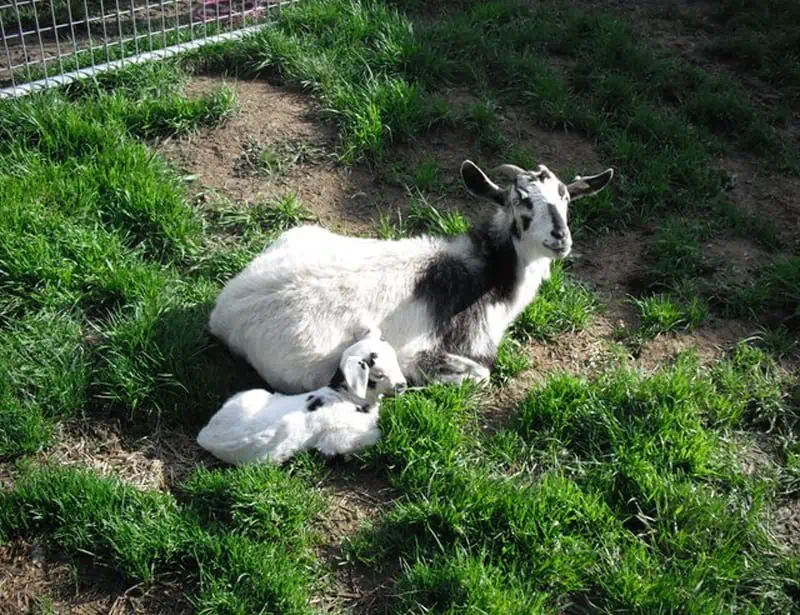
Initially from New Zealand, the Kiko Goat was created through selective breeding techniques in the 1980s. These goats are known for their adaptability and hardiness, which sets them apart from other breeds of goats.
'Kiko' comes from the Maori language and means 'meat' or 'flesh.'
14. Pygmy Goat (Capra hircus)
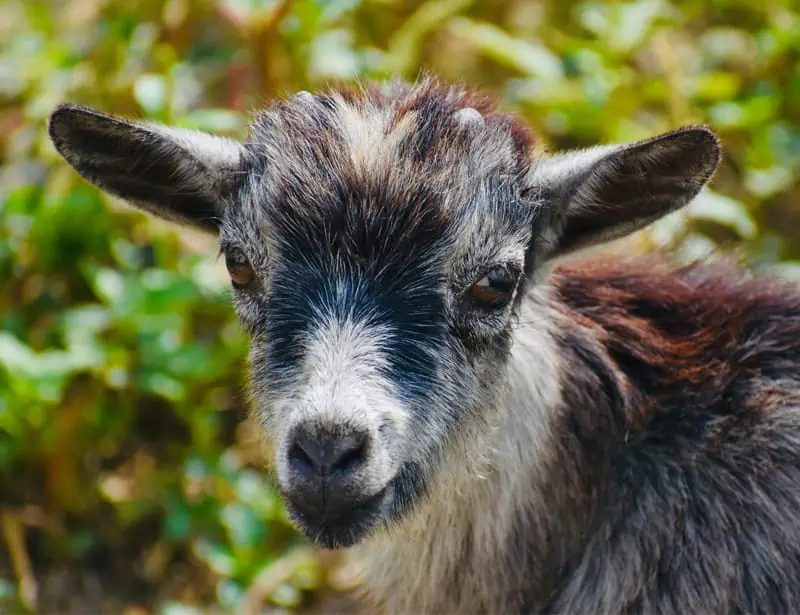
The Pygmy Goat or Cameroon Dwarf Goat originates in West Africa. Despite their size, Pygmy goats have a compact and muscular build. Bucks weigh 50-75 lbs, while does weigh 40-60 lbs. Their medium-long, straight coats are black, white, grey, or caramel.
These miniature goats prefer high, rough vegetation over grass and are agile climbers and jumpers. Furthermore, social interaction is crucial for Pygmy goats, and they tend to get stressed when left alone.
15. Nigerian Dwarf Goat (Capra hircus)
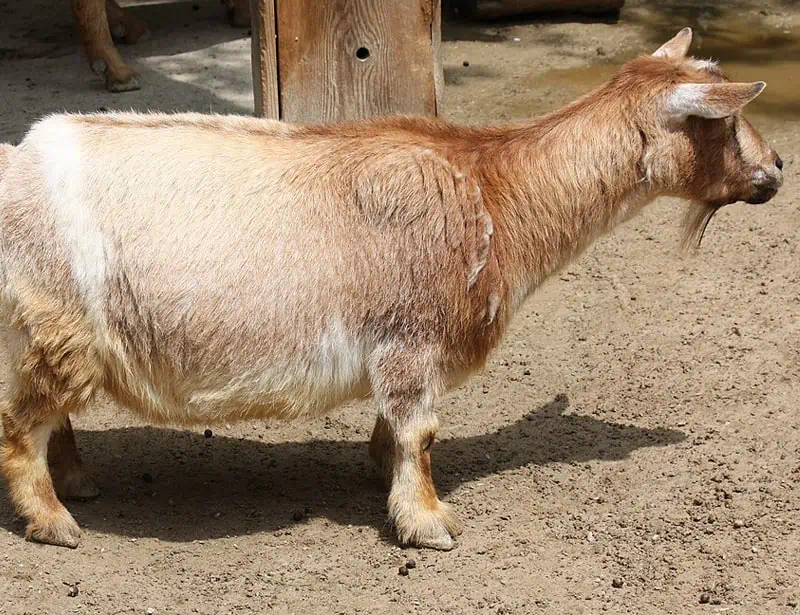
The Nigerian Dwarf Goats originate from West Africa. These dairy goats may be small, with adult males and females measuring only 23.5 and 22.5 inches tall, but they can produce up to 2-3 liters of milk daily.
These types of goats are generally friendly and gentle, making them well-suited for pet ownership and show events.
16. Angora Goat (Capra hircus)
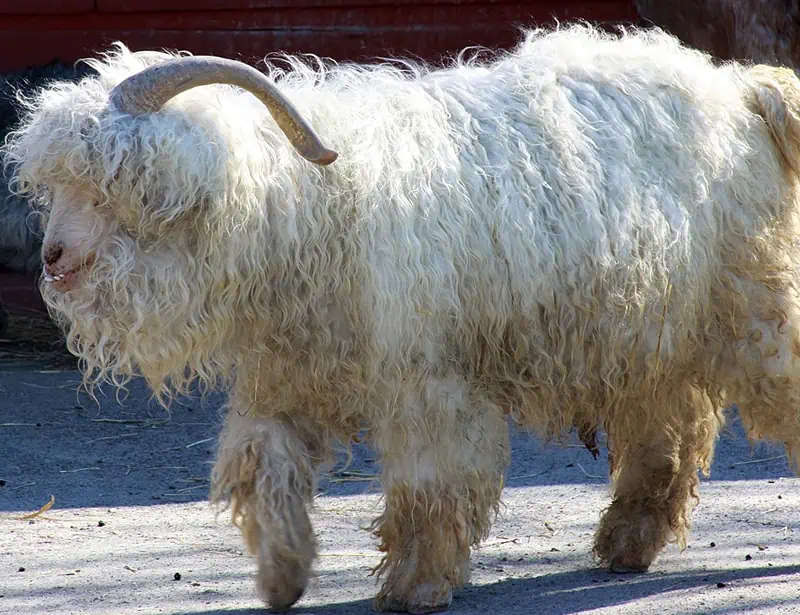
Hailing from the region of Angora in present-day Turkey, Angora goats have become an invaluable asset in agriculture and fashion. These goats produce a glossy, radiant fiber known as mohair, often called the 'Diamond Fiber' for its exceptional quality and shine.
Mohair is a silky wool that can grow up to six inches long. These fiber goats are smaller than other breeds but have long, curly fur that can be white or different colors.
They weigh between 70 and 110 pounds and are adaptable to different climates, but they need protection from extreme weather conditions since their fur lacks waterproofing.
Related Read: A Complete Guide to Sustainable and Ethical Fabric.
17. Spanish Goat (Capra hircus)
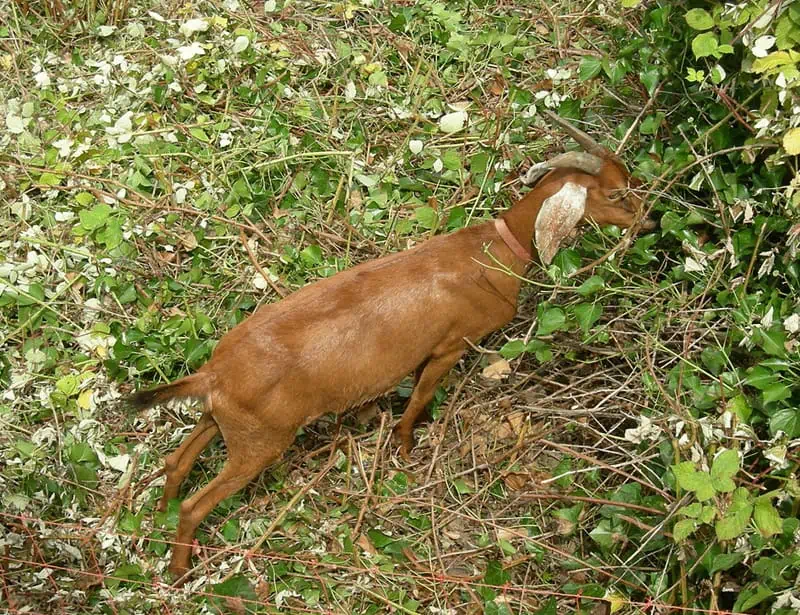
Historical records indicate that Spanish explorers brought ancestors of Spanish Goats across the ocean during the 16th century. The large Spanish goat breed has a high growth rate, making them popular meat goat breeds1.
Their distinguishing feature is their long horns, which sets them apart from other breeds. They have a range of coat colors, including black, white, and brown.
Additionally, these goats are ecologically beneficial and can clear overgrown fields through extensive grazing2.
18. Myotonic Goat or Tennessee Fainting Goat (Capra hircus)
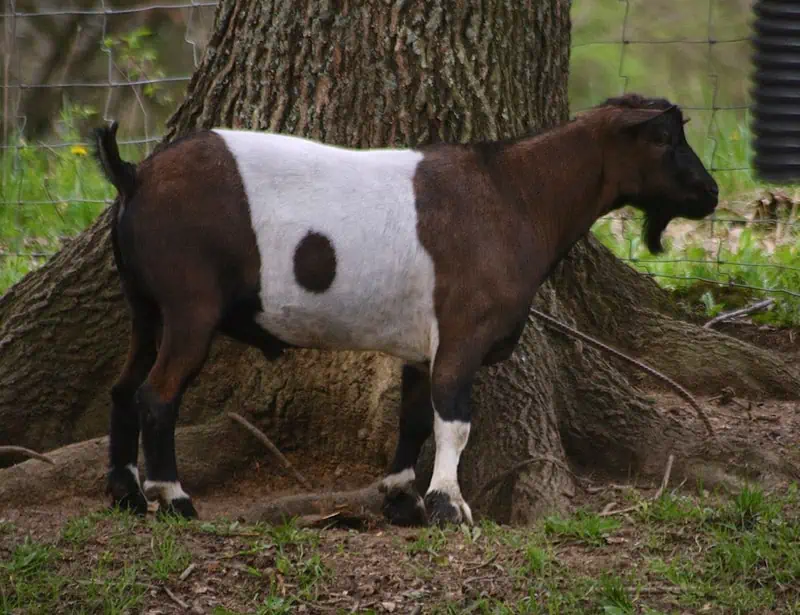
Tennessee Fainting Goats, also called the Myotonic Goat, hail from the United States. They are known for their distinct genetic characteristic, resulting in temporary muscle stiffness when startled or overstimulated. They remain conscious during these 10 to 20-second episodes.
In addition to this unusual trait, they are a sturdy, adaptable breed. Males weigh 60-175 pounds, and females weigh 60-135 pounds. They come in various colors, including black, white, brown, and gray.
19. Rove Goat (Capra hircus)
The Rove Goat are native goats of the rocky landscapes of the Rove region in France. Their dark coats and long, twisted horns can reach up to 4 feet.
In the 1970s, Rove goats almost faced extinction as they had low milk production compared to other dairy goats. Despite past endangerment, their population has been rising steadily. By 2003, French farms registered over 5,000 of these goats.
20. Savanna Goat (Capra hircus)
The South African White Goat, also known as the Savanna Goat, is a breed of goat originating from South Africa. It is a hardy breed with a white coat that acts as a natural sunscreen against the hot sun. It has floppy ears, a prominent Roman nose, and a strong body.
The male weighs between 200-250 pounds, while the female weighs around 125-200 pounds.
Are Mountain Goats actually goats?
Despite the confusing name, Mountain Goats (Oreamnos americanus) are not truly goats. They belong to a different genus, Oreamnos. In fact, they are more closely related to antelopes and gazelles than to their namesakes.
| 1 |
Browning, R., & Leite-Browning, M. L. (2011). Birth to weaning kid traits from a complete diallel of Boer, Kiko, and Spanish meat goat breeds semi-intensively managed on humid subtropical pasture. Journal of Animal Science, 89(8), 2696-2707. |
| 2 |
Escareño, L., Salinas-Gonzalez, H., Wurzinger, M., Iñiguez, L., Soto-Navarro, S. A., & Meza-Herrera, C. A. (2013). Dairy goat production systems: Status quo, perspectives and challenges. Trop Animal Health Production, 45(1), 17-34. |
| 3 |
Zheng, Z., Wang, X., Li, M., Li, Y., Yang, Z., Pan, X., Gong, M., Zhang, Y., Guo, Y., Wang, Y., Liu, J., Cai, Y., Chen, Q., Okpeku, M., Colli, L., Cai, D., Wang, K., Huang, S., Sonstegard, T. S., . . . Jiang, Y. (2020). The origin of domestication genes in goats. Science Advances, 6(21). |
Mike is a degree-qualified researcher and writer passionate about increasing global awareness about climate change and encouraging people to act collectively in resolving these issues.
Fact Checked By:
Isabela Sedano, BEng.

